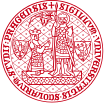


Malach Centre for Visual History
USC Shoah Foundation's Visual History Archive
Founded by Steven Spielberg after he completed the film Schindler's List in 1994, the USC Shoah Foundation Institute was established to collect and preserve the testimonies of survivors and other witnesses of the Holocaust. The Foundation conducted interviews with the Jewish survivors, Roma and Sinti survivors, liberators, survivors of the eugenics policies, political prisoners, aid providers, homosexual survivors, war crimes trials participants etc. Over next few years the Foundation collected almost 52 000 videotaped testimonies in 56 countries and 32 languages, constituting one of the largest digital video libraries in the world.
In 2013, USC Shoah Foundation – The Institute for Visual History and Education has added a collection of testimonies of survivors and rescuers from the 1994 Rwandan Tutsi genocide to its Visual History Archive. This marks the first integration of testimonies outside of Holocaust survivors and witnesses into the Visual History Archive. The 65 audiovisual interviews in this new collection mark the beginning of the Rwanda Archive and Education Program, the Institute’s landmark initiative in partnership with Aegis Trust at the Kigali Genocide Memorial (KGM) that aspires to record and preserve approximately 500 Rwandan testimonies as an educational resource for the entire world, for all time.
The Visual History Archive is an on-line software interface, which provides effective tools for users to identify whole testimonies of relevance, as well as specific segments within testimonies that relate to their area of interest. You can explore the VHA On-line version including more than 1 000 testimonies in English and some selected testimonies in other languages. However, the full archive is available only at the access points.